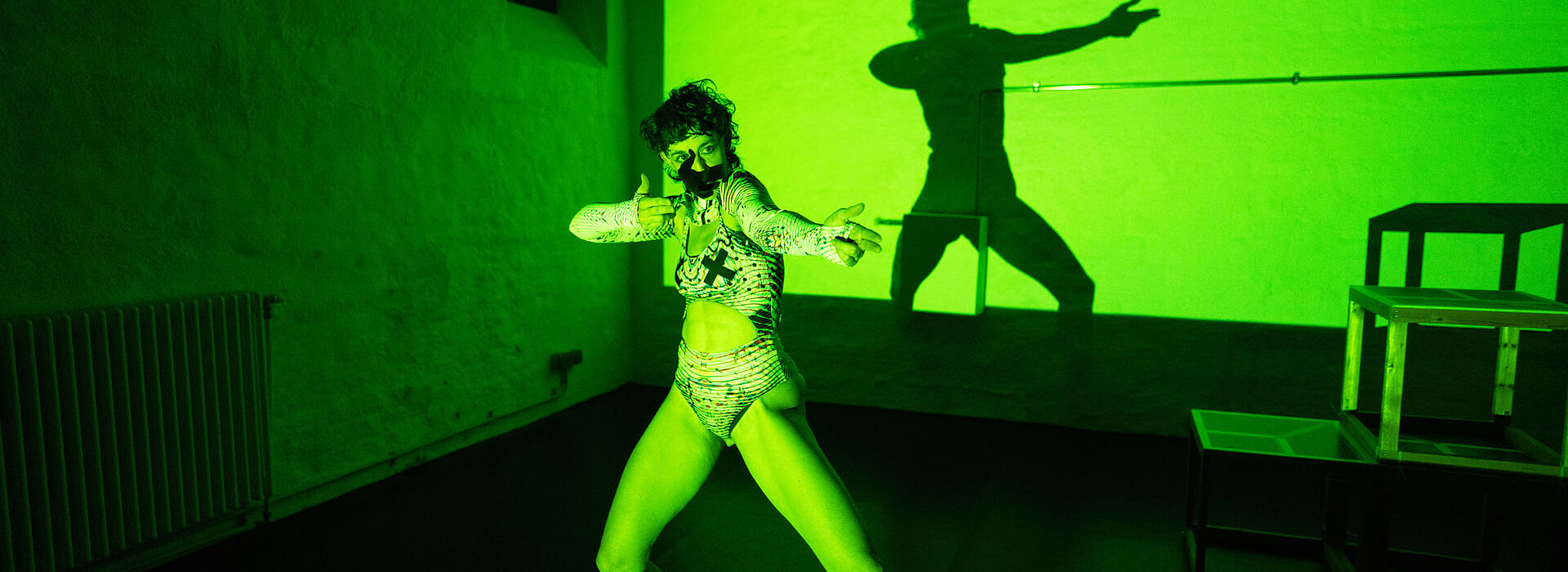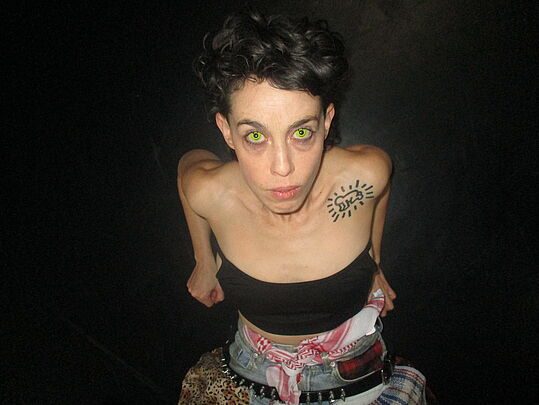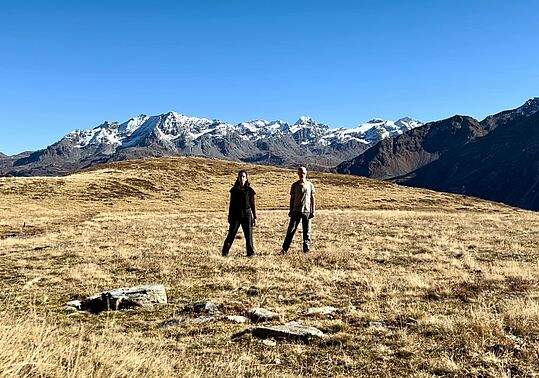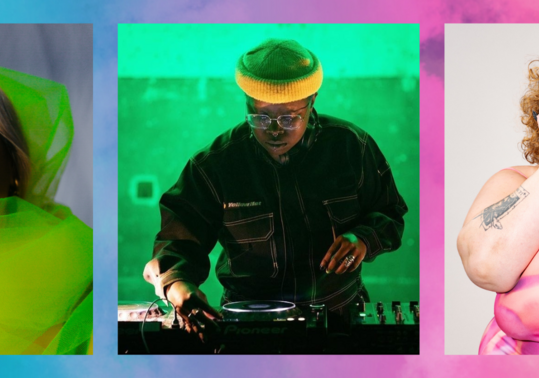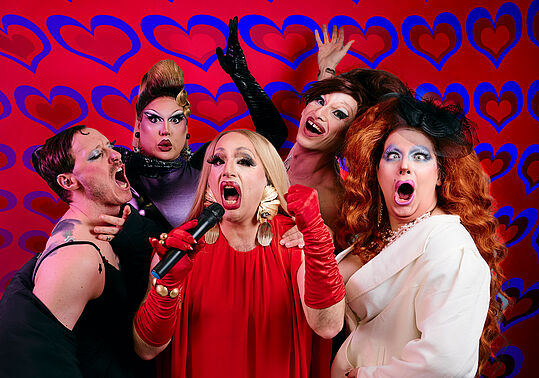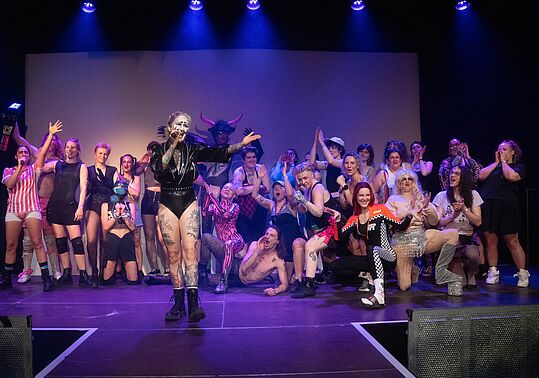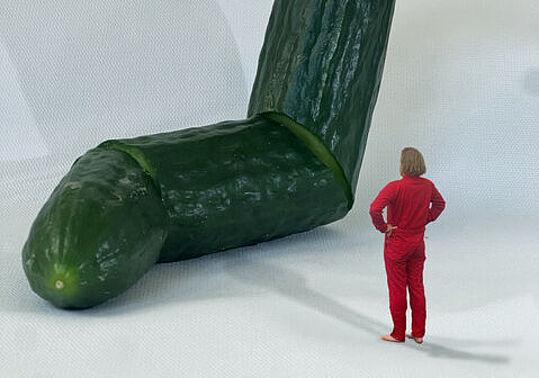RAGE – Art, Rebellion, and the Politics of Emotion
Lesezeit: ca. 7 Minuten
The performance RAGE by Daphna Horenczyk brings an unfiltered exploration of raw emotion to the stage, pushing the boundaries of artistic and personal expression. Blending performance, music, and visual elements, it delves into the complexities of defiance, vulnerability, and the urgency of being heard. The premiere will take place at WUK performing arts on February 13th. We spoke with the artist ahead of the premiere:
«Social media offers an illusion of connectivity, but it ends up making us feel very lonely.»
Loneliness and polarization are themes that deeply resonate in today’s world. What drew you to these subjects, and in your view, how are they interconnected? How do these dynamics shape the personal and societal tensions you explore in this performance?
Daphna Horenczyk: I was drawn to these subjects not out of choice but of necessity. I feel lonely and see polarization in almost every aspect around me. I can't ignore it any longer. Social media offers an illusion of connectivity, but it ends up making us feel very lonely. This makes us go on social media, and the cycle continues. Social media is designed to keep us in echo chambers, and it responds very well to rage, catalyzing radicalization and polarization in society. This often leads to the feeling of knowing what's "ultimately right" and what is just. That is what I criticize in my performance.
«If I can't change the world, at least I can channel my rage through my love for art.»
You’ve described this work as a response to a series of personal and global disappointments. What happens on the journey from disappointment to rage, and how did that emotional transformation lead to the creation of this piece?
Daphna Horenczyk: The accumulation of disappointment that I've experienced in the last years made me feel more and more alienated, as if my perception of the world around me was totally off. This growing feeling had no outlet besides banging my head against the wall. I then thought, “fuck it.” If I can't change the world, at least I can channel my rage through my love for art, my skills, and the platform I'm given, and practice my political activism on stage. The reactions around me were often - “Daphna, you're not alone,” which gave me extra motivation to do this work.
In addition to disappointment, RAGE explores intense emotions such as anger, frustration, and vulnerability. What drew you to focus on rage in particular? How do you understand this emotion personally, and what creative or personal potential do you feel it holds?
Daphna Horenczyk: Rage, like all emotions, is first and foremost a bodily experience. It heats me up from within, tightening muscles, quickening breath, flooding the body with a raw, restless energy. And I needed relief. But I wasn’t just looking for a way to release it—I wanted to understand it, to break it down into actions that didn’t fall into the usual extremes. On one hand, rage is often associated with uncontrollable aggression—outbursts, destruction, high-tension explosions that leave damage in their wake. On the other hand, it can also turn inward, freezing me in place, paralyzing me with helplessness, making me feel powerless instead of powerful. I wanted to find a space in between—a way to channel rage into something active but not destructive, forceful but not reckless, intense but not immobilizing. And just as importantly, I didn’t want to defuse it in a way that dulled its urgency or compromised the very issues that enraged me in the first place.
Because some things deserve rage. Some things demand it. The question was how to harness it without letting it consume or control me.
«So I went 'punk' about it.»
For this performance, you’ve taken a DIY approach, creating everything yourself—from movement and music to costumes and set design. This method seems to echo the rebellious and anti-establishment ethos of punk culture. How did this hands-on process shape your connection to the work, and what surprised or challenged you the most along the way?
Daphna Horenczyk: First of all, I’ve learned quite a few new skills—sewing, playing musical instruments, producing electronic music, and more. These were things I’d always wanted to explore but never had the time for before, and I’m really grateful I finally got the chance. Like with any learning process, there were challenges along the way. Since I was learning with a specific outcome in mind and under time pressure, I had to be realistic about my limits.
I often found myself caught between pushing to improve and giving myself a break, knowing I wasn’t going to reach a professional level. But in a way, that just confirmed something I had already felt—these days, as an artist, there’s pressure to be a multi-talent. Every second artist seems to be a dancer, musician, visual artist, and influencer all at once. But I don’t believe you can truly do everything—at least not in the standards I have for myself. So I went 'punk' about it.
At the same time, being so hands-on with every aspect of this project had its downsides. It didn’t always allow me to step back and see the bigger picture. When you’re involved in every little detail, it’s harder to have the distance needed to evaluate your work clearly. Sometimes, being too deep in the process can make it difficult to know when to refine, when to stop, or even when to ask for outside perspective.
«Instead of fostering dialogue, this environment turns complex discussions into simplistic moral tests.»
In your performance, you seem to embrace provocation as a way to engage with strong emotions and societal issues. Why do you feel that provocation is necessary in this context? What do you hope to achieve through it, and why does it feel particularly important to you right now?
Daphna Horenczyk: I didn’t set out to provoke. I used exaggeration and distortion as artistic tools to reflect a reality I had experienced—not to shock, but to express something deeply felt. Yet, it was perceived as provocation. And ironically, that reaction brought me to exactly the kind of discourse I had been longing for—honest, uncensored, and deeply connecting.
In the current political climate, we (on the left) can no longer afford to prioritize being “nice.” The idea that progress comes solely through politeness, careful wording, and avoiding offense has led to a self-imposed restraint that limits necessary discussions. What is perceived as provocation in my work might be provocative because certain images and words have been automatically banned—dismissed outright rather than considered in their full meaning and context.
Ironically, the progressive left has created an increasingly conservative atmosphere where expressing certain ideas, even in critical or artistic ways, is met with immediate backlash. Instead of fostering dialogue, this environment turns complex discussions into simplistic moral tests: Are you on the right side or the wrong one? But when expression itself becomes a provocation, we have to ask—who is actually setting the limits, and who benefits from these restrictions?
As someone who is working with such raw and challenging material, what role does vulnerability play in connecting with the audience? And if there’s one question or feeling you want the audience to leave with after seeing RAGE, what would it be?
Daphna Horenczyk: If I want to create any kind of dialogue at all, I have to allow myself to be honest, exposed, and vulnerable. After all, this work is carved out of pain—it isn’t just an intellectual or representational exercise. It’s important to me that it doesn’t stay at a distance, safely confined to theory or aesthetics. Instead, I want to offer a space for connection and reflection, where emotions aren’t just observed but felt. Vulnerability isn’t just a choice; it’s a necessity. Without it, real dialogue is impossible. It’s only by opening myself up—by refusing to shield my work from discomfort—that I can create something that resonates beyond the surface.

